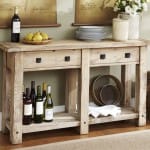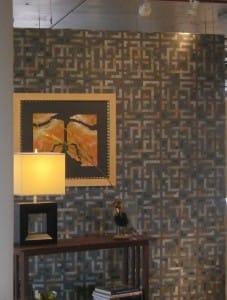26 Dec The Pioneers Predict
Past and present green building trends mean 2012 will bring increased interest in healthy indoor-air quality, reclaimed and recycled products, and smaller homes
 Residents on the West Coast have been walking the green building walk longer. But even in the Midwest, which often lags behind, people who build or remodel in the New Year likely will be doing more than talking the talk.
Residents on the West Coast have been walking the green building walk longer. But even in the Midwest, which often lags behind, people who build or remodel in the New Year likely will be doing more than talking the talk.
From seeking smaller, more energy-efficient homes to using low-VOC (Volatile Organic Compound) paints, finishes and furniture, healthier, planet-conscious trends have a firm foothold that can only grow in the future, experts say.
“Clients are now asking for sustainable strategies in the first meeting,” says Michael Mauch, architect, LEED AP and principal of RWA Architects in Cincinnati, OH. “We do not have to bring it up. They bring it up. What homeowner does not want clean indoor air? Lower energy bills? And smart design? Now they know they can ask for it up front.”
In Bellingham, WA, where homeowners have been asking up front for years, the top building and decorating trends are remarkably similar, says Rob Staveland of Aiki Homes.
Our green building pioneers say that the homeowner of today and the near future wants:
— Low or zero-VOC paints, stains and finishes.
— Energy efficiency.
— Flooring, furnishings and insulation that do not emit unhealthful chemicals, and products that are reclaimed or sustainably harvested or contain recycled content.
— Smaller, quality homes that are connected to a community.
Paints, stains and finishes
Staveland, whose company has been on the forefront of green building since the early 1990s, says a proliferation of quality, low-VOC paints, stains, floor finishes and adhesives have a well-established following in Washington State. Consumers, he says, also are becoming increasingly aware that the term, low-VOC, does not guarantee protection from all chemical irritants, so third-party certifications such as GREENGUARD are being sought.
“There is a wider array now of quality products,” he says. “This area has progressed tremendously. The products of 15 years ago had problems in terms of quality. Quality is not the issue now. The issue for the conservative building community likely is that these products cost more.”
Mauch, who has been focused on green building since the late 1990s, says that consumer demand means more contractors are now accepting of green products. But getting them to embrace low-VOC paint remains a challenge.
“Many builders still assume that water-based paints do not hold up as well as the oil-based paints, when water-based paints are durable, easy to clean up, healthy finishes,” Mauch says. “The technique for application may be slightly different than what some painters were taught or are used to. But once the difference is understood, most have no problem using the low or no-VOC paints.”
Builder J. Stuart Cowan, president of Somerset Custom Homes in Cincinnati, disagrees. Cowan’s company built a home that was featured last summer in the city’s first ever Greenarama home show. The interior paint used was zero-VOC.
“From the painter’s point of view, they have to work harder and often need an extra coat to get the same coverage as before,” Cowan says.
A. Maris Bernard, an interior designer and LEED AP in Cincinnati, likely would not work with a painter who had that mindset. Using low- or no-VOC paints is a big trend, particularly for hand-painted or stenciled wall designs, she says.
“More and more of my clients are asking for low-voc paints,” she says. “They don’t want to spend months airing out their homes or suffering from headaches after a room has been painted. It’s no longer simply an environmental decision – it’s a quality-of-life decision.”
Recycled, recyclable and reclaimed
More attention, Bernard says, also is being paid to recycled content and reclaimed content in new furnishings and decorating materials. She points to major furniture suppliers who now offer furniture made from reclaimed hardwood, in addition to consignment and antique stores that are now viewed as trendy.
Beyond low-VOC paint, one of Bernard’s favorite wall treatments is made from Bagasse, a by-product of sugar cane processing, which can be installed with low-VOC adhesive.
“Instead of ending up in a landfill, it is molded into designer wall tiles,” she says. “Because it is also biodegradable, it is recyclable at the end of its useful, decorative life.”
Recycled content is another area that clients are showing interest in, Mauch says, “although at first it may not always be based on an environmental issue. Instead, it often is of interest based on a unique, fun idea of using a material that may have had another use or life. The environmental idea of not filling up the landfill is an added bonus.”
In flooring, Mauch expects current interest in reclaimed hardwood, stone floors – new and reclaimed – and ceramic tile with recycled content to continue.
Cowan says he expects great interest in the continued improvement of paints and finishes, and “the repurposing of materials to look like new, natural materials, taking plastics, glass and other waste and making it look like stone, wood floors, countertops or ceramic tiles. The sky is the limit for exciting new products that have value for customers and builders alike.”
On the northwest coast, where engineered hardwood and polished concrete are currently top flooring choices for people building green homes, the trend is turning toward the smaller, quality, energy-efficient home, Staveland says. And more and more, he says, the trend is moving to village, or shared-property, communities.
Energy efficiency
Heat pumps are popular in Washington, and interest in them will rise, Staveland says. On-demand water heaters also are increasing in popularity. And solar energy is “getting tons of interest although not everyone can afford it,” Staveland says.
In the Midwest, energy use is on everyone’s mind, Mauch says.
“Every homeowner is reminded of it each month with their utility bill,” he says. “Anything that can reduce the utility bill is of interest to most clients. Geo-thermal is of particular interest to clients and not always for the energy savings. Many decisions on Geo-thermal HVAC systems by clients are based on not so much the energy savings as on the fact that there will be no exterior air conditioning condenser unit sitting outside making noise in the summer months.”
Smaller homes, connected communities
Mauch notes that in the Midwest, there also is a trend toward smaller homes, not like the large LEED home pictured with this blog, that do not sacrifice interesting detail.
“Many clients come to us describing how they wish to downsize,” he says.
Staveland says, in large part because of the economy, “The biggest movement coming is an increase in pocket communities, including condominium and village homes where people are downsizing and sharing properties.”
Bernard sees a similar trend as perhaps the most important trend in green design.
It is the return to the urban center and existing housing stock, she says. It is the desire, she says, to live in a place with a sense of place – and connection to community through walkability and public transportation – and, it is revitalizing the smaller, residential footprint.
“McMansions may not be completely passé, but smaller homes cost less – and cost less to heat, to cool, to furnish,” she says. “This saves both on the cost of running the home, as well as stress on the infrastructure of utilities to support larger homes with larger electrical and heating requirements.”©





Pingback:The Pioneers Predict | Natural Interiors® Blog | Self Sufficiency | Home Efficiency
Posted at 06:07h, 26 December[…] more: The Pioneers Predict | Natural Interiors® Blog ← Some Thoughts on Green Home Improvement Jobs « ApnaKarachi […]
home interiors in chennai
Posted at 07:48h, 01 AugustHome interiors may be significantly evolved by simply introducing curtains which can be perfect for building your current much desired ambience. Full-length draperies provide a dressy and conventional look, unlike simple draperies look much more casual.
Pingback:Michael Mauch Discusses Green Trends with Natural Interiors - RWA Architects
Posted at 11:05h, 31 August[…] in healthy indoor air quality, reclaimed and recycled products, and smaller homes. Click here to read what Michael Mauch had to say about these trends in a recent article from Natural […]